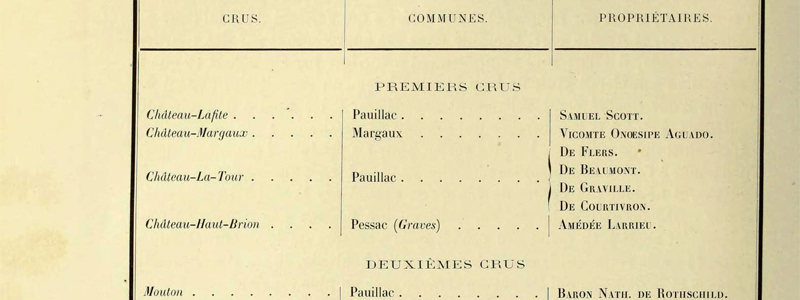![The Five Famous First Growths Of Bordeaux Compared [INFOGRAPHIC]](http://vinepair.com/wp-content/themes/vpcontent/images/blank.gif)
The Exposition Universelle of 1855, held in Paris, attracted millions of visitors, who passed through grand halls where the latest works of industry and culture were on display. In the 19th century, France was recognized as the world’s finest producer of wine — so there was no question that wines would be offered for sampling. The question was how the wines would be exhibited. Bordeaux’s wines (commonly referred to as clarets) were already known around the world, particularly in England, whose wealthier classes had been importing them in mass quantities for centuries. So, it was no surprise that the country’s new Emperor, Napoleon III, ordered a classification drawn up of Bordeaux’s best wines. The wines were ranked by reputation and price, with an emphasis on the latter. The result was The Bordeaux Wine Official Classification of 1855.
While other classification systems have been established in Bordeaux and beyond, in an amazing feat of marketing, tradition and perhaps inertia, no other classification system has achieved the same level of fame. While some Chateaux have changed names, merged and split, and plots of land have changed hands, the list itself has seen barely any change. In 1855, four wines were recognized as existing in a class above all others: Château Lafite Rothschild, Château Latour, Château Margaux and Château Haut-Brion. Nearly 160 years later those four still stand amongst the most famous and most expensive in the world. Since 1973 they have been joined by a former ‘Second Growth,’ Château Mouton Rothschild (an interesting story for another day!). Our infographic compares these five famous first growths, from their origins and output to price and popularity.
![The Five Famous First Growths Of Bordeaux [INFOGRAPHIC]](https://vinepair.com/features/external/five-first-growths-bordeaux-compared-infographic.png)
![The Five Famous First Growths Of Bordeaux Compared [INFOGRAPHIC] The Five Famous First Growths Of Bordeaux Compared [INFOGRAPHIC]](https://vinepair.com/wp-content/themes/miladys/src/assets/images/article-card-small.png)
